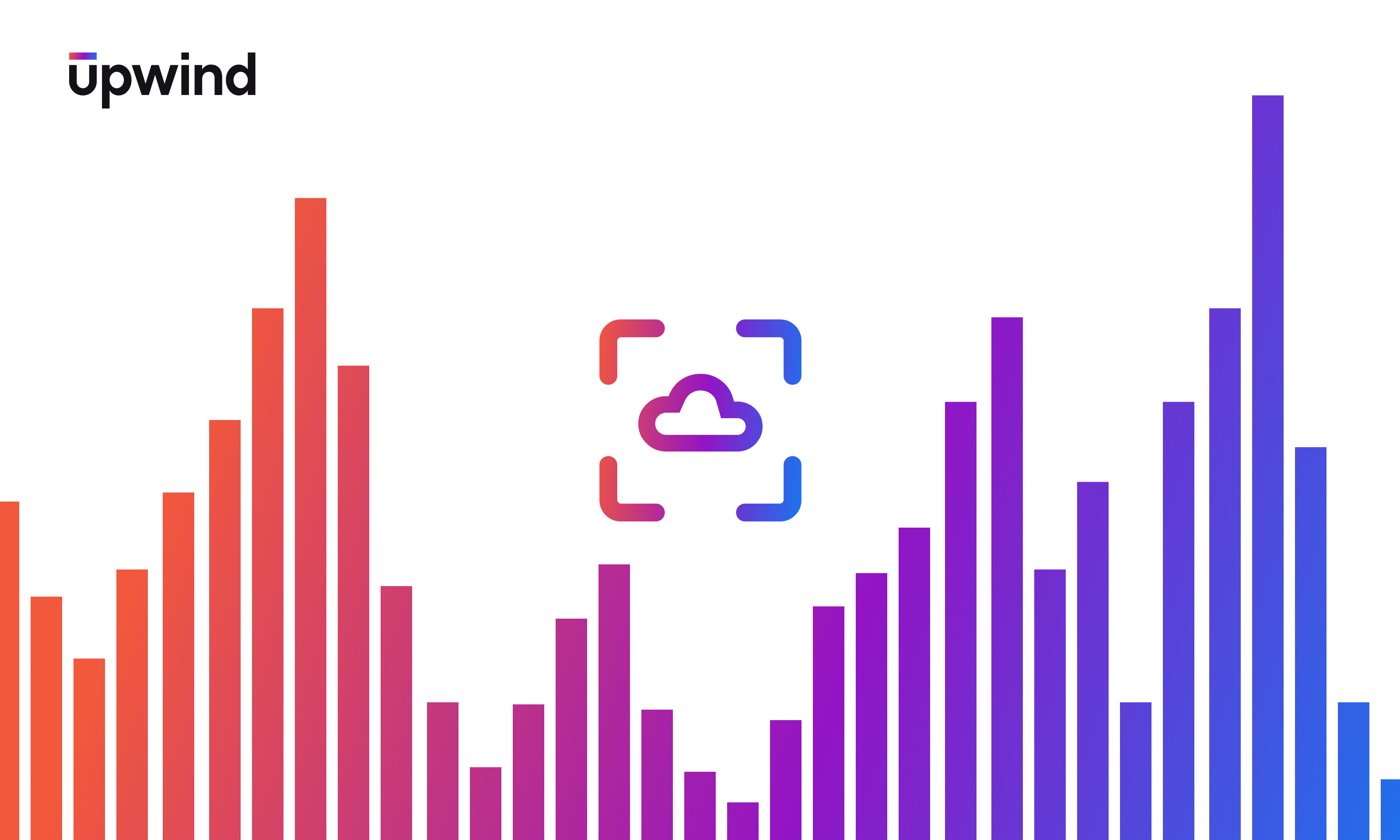
The Hidden Costs of Agentless Cloud Scanning
A deep dive into architectures, trade-offs, and total cost of ownership
Agentless cloud scanning has become a foundational capability for cloud-native security. By connecting directly to cloud provider APIs, organizations gain near-instant visibility into configurations, assets, and vulnerabilities without deploying agents or modifying workloads.
The operational appeal is clear: agentless scanning reduces friction for DevOps, speeds onboarding, and standardizes visibility across accounts. But behind its simplicity lies a range of different architectural implementations, each with its own trade-offs for performance, cost, and data control.
This analysis focuses on two primary agentless architectures: Full SaaS (vendor-hosted) and Outpost (customer-hosted) to help organizations understand where compute happens, how data flows, and what those design choices mean for long-term cost and compliance.
In short: this is not a debate of agentless versus agents, it’s an evaluation of where and how agentless scanning operates. Full SaaS scanning prioritizes ease of use; in-account Outpost models prioritize control, compliance, and cost efficiency. Understanding these hidden costs and tradeoffs begins with understanding how agentless scanning actually works.

Why Agentless Became the Standard
Traditional agent-based security tools required deployment across thousands of workloads and often came with performance problems including high CPU and significant memory usage, introducing friction for DevOps teams and visibility gaps for security.
However, the emergence of agentless cloud scanning changed this model. With agentless cloud scanners, security teams can connect directly to cloud APIs, providing organizations with instant visibility into their inventory assets, as well as detecting misconfigurations and identifying vulnerabilities, all without modifying workloads or changing pipelines.
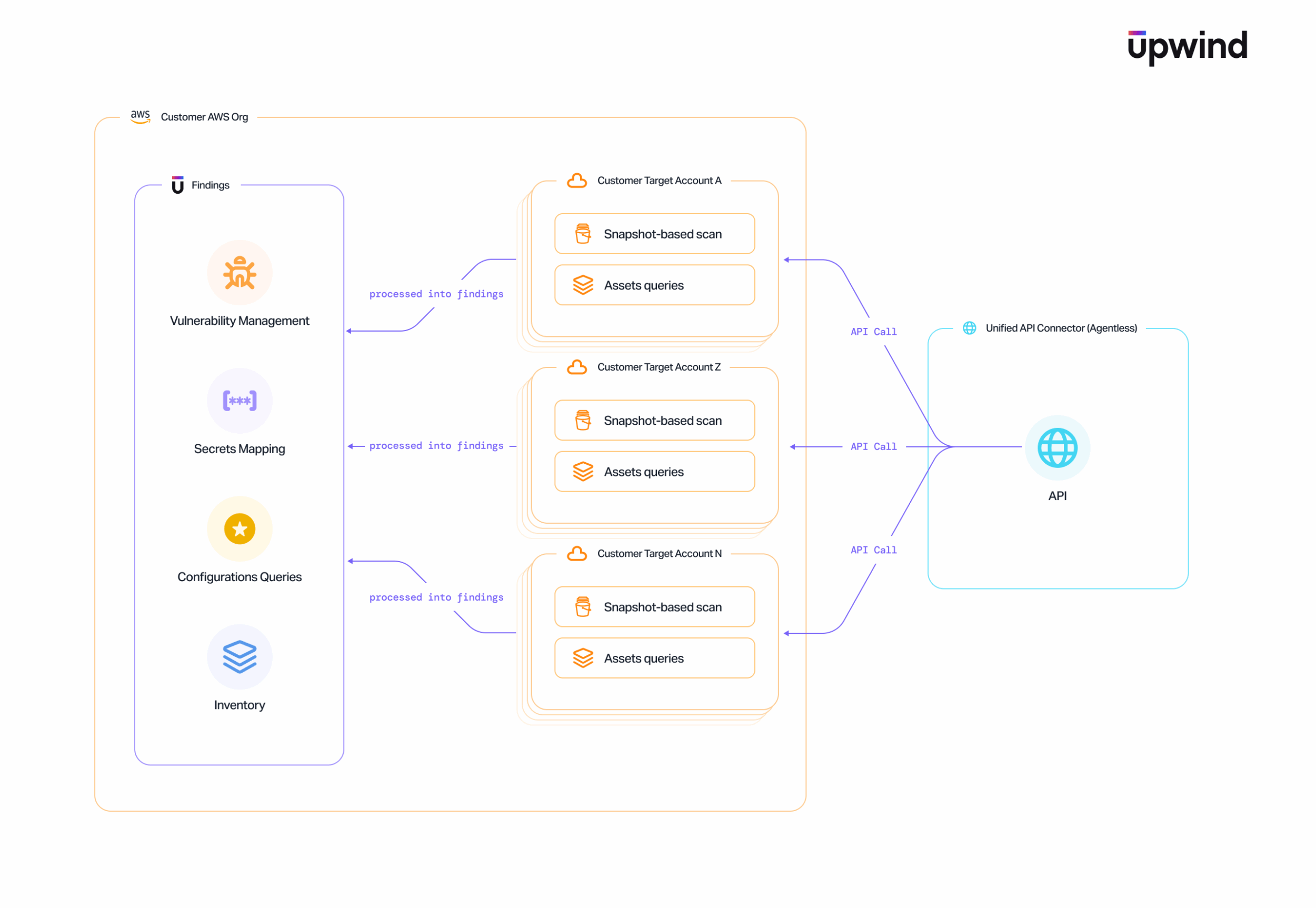
For organizations early in their cloud security maturity journey, agentless scanning delivers a complete view of posture with minimal overhead. However, as architectures grow more complex and risks become more runtime-driven, many security organizations acknowledge that visibility without runtime context can create noise instead of actionability.
How Agentless Scanning Works
At its core, agentless scanning depends on authenticated access to cloud provider APIs. The scanner enumerates assets, retrieves configuration data, and in some cases creates temporary snapshots or volume copies for deeper inspection.
Typical Data Flow
1. Cloud APIs queried for inventory and configuration metadata
2. Snapshots or volumes created for deeper analysis
3. Data exported or streamed to scanning compute
4. Analysis engine processes findings
5. Results returned to central dashboard or APICopied
Each step involves compute cycles, data movement, and network egress; elements that directly affect both security posture and cost efficiency.
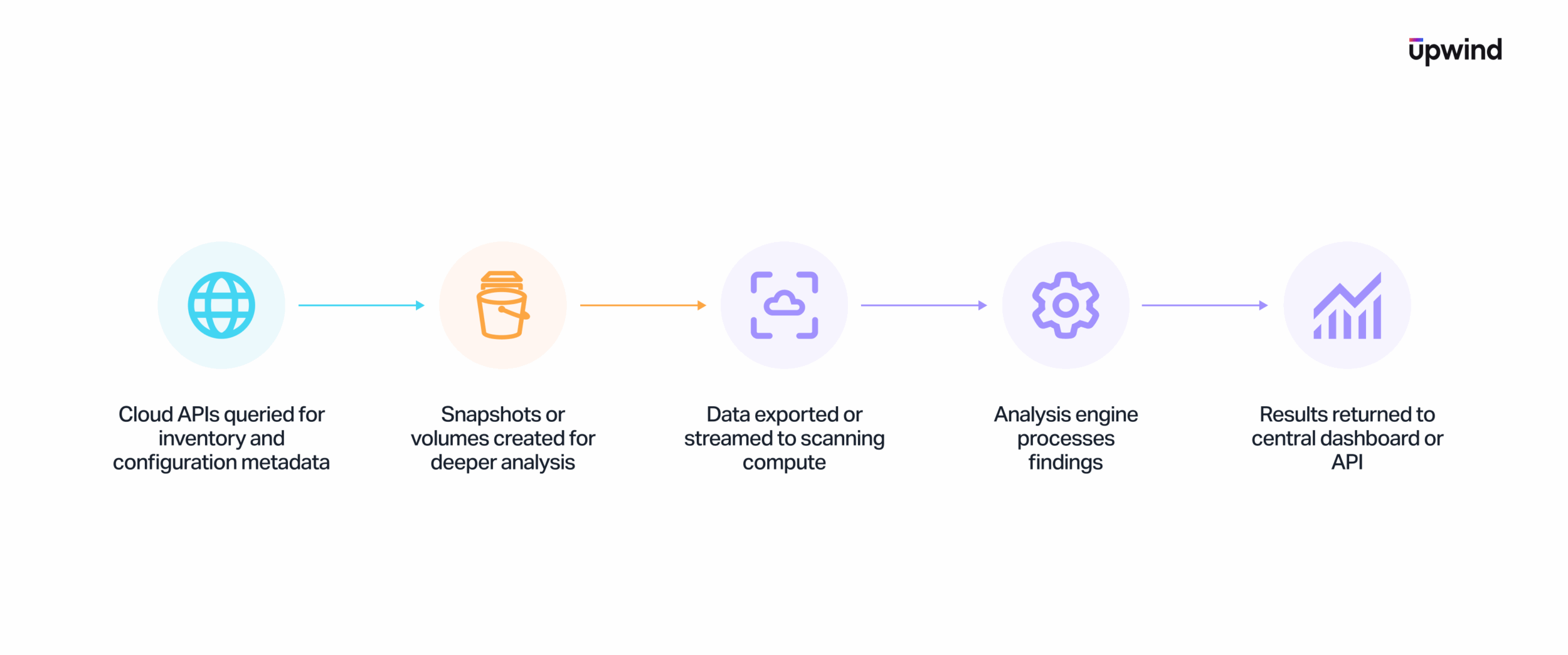
The Two Main Agentless Architectures
Agentless scanning isn’t a single technology; it’s a spectrum of architectures that determine where analysis happens and who manages compute and storage.
1. Full SaaS (Vendor-Hosted) Scanning
In this model, scanning and analysis occur entirely within the vendor’s cloud. The customer environment is accessed remotely through APIs, and resource snapshots are transferred externally for processing.

Technical Profile
- Compute and storage reside in the vendor’s environment
- Customer data crosses cloud boundaries via API and network export
- Scans are typically scheduled on recurring intervals
Advantages
- Fastest deployment and minimal setup
- No infrastructure to manage or maintain
Hidden Costs
- Compute Markup: Vendors pay for compute on their side, then repackage those costs into subscription pricing, often with margin.
- Residency Exposure: Configuration and metadata leave customer control, creating compliance and sovereignty challenges.
Disadvantages:
- Cost Amplification: Each exported snapshot or log incurs network-transfer fees, which scale significantly at enterprise volume. Over time, this can turn convenience into a recurring expense.
- Data Exposure Risk: Transferring configuration snapshots and metadata outside the customer’s environment significantly increases the surface area for potential data leaks or unauthorized access.
- Processing Complexity: Large volumes of data require serialization, queuing, and cross-network processing that introduce latency and operational overhead.
- Third-Party Data Dependency: Once data is exported to a vendor’s environment, customers rely on that third party’s storage, access control, and deletion policies, creating potential long-term compliance and trust concerns.
2. Outpost (Customer-Hosted) Scanning
In a customer-hosted scanning model, scanners run inside the customer’s own cloud account. Analysis happens locally, and only results or metadata are sent to the vendor’s SaaS control plane.
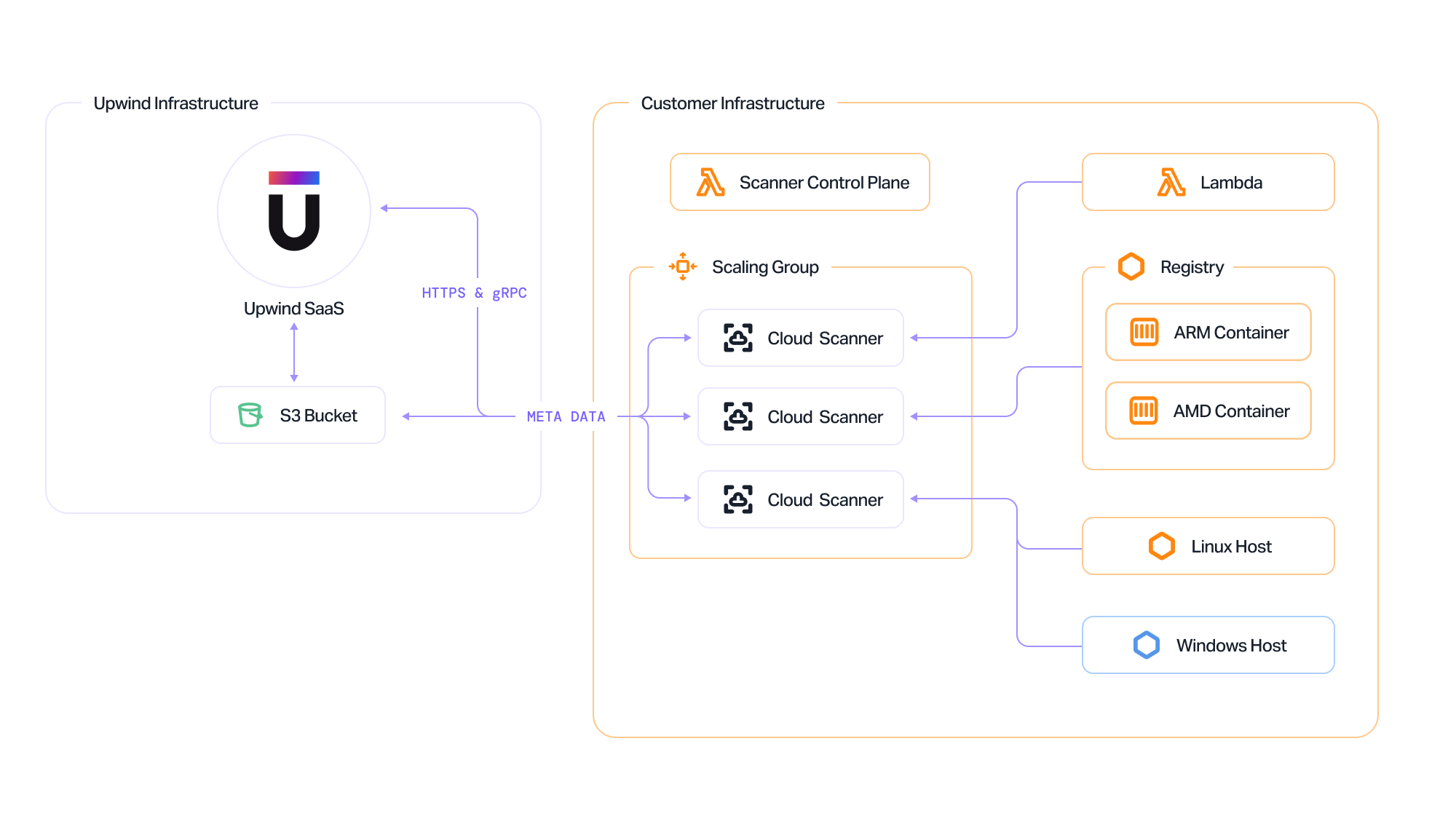
Technical Profile
- Infrastructure is managed remotely by the vendor
- Compute billed directly to the customer’s account
- Scans can be continuous or on-demand
- Designed to be elastic, meaning that when a scan is not running, the infrastructure cost is $0
- Can leverage cloud providers’ spot instances with smart checkpointing for efficient re-runs
- Often aligns with the customer’s existing cloud EDP and usage commitments
Advantages
- Data never leaves the environment, eliminating egress cost
- Stronger compliance and audit posture
- Reduced compute cost at scale
Trade-offs
- Requires initial deployment of scanners
- Slightly higher operational complexity
The Economics Behind Agentless Architecture
Every generation of cloud technology has promised simplicity, but often new forms of complexity are introduced at a lower layer. Both agentless models deliver value, but understanding their economic differences is key.
Removing agents reduces operational friction, but the model shifts cost into the layers you don’t see: API usage, data transfer, and vendor-managed compute. These are the real cost multipliers that grow with scale.
Key Cost Drivers:
- Storage: Temporary snapshots retained for analysis become long-term storage expenses.
- Compute: Analysis workloads running in vendor infrastructure are ultimately charged back to customers through pricing models that mask per-scan compute consumption.
Agentless scanning simplifies operations, but it does not eliminate cost, it redistributes it. The economic question becomes where those costs should live: within your environment, where you control them, or externally, where they are abstracted and marked up.
Cost Comparison at Scale
To illustrate how these costs accumulate, consider a representative workload scanning 100 cloud instances daily.
| Model | Compute Location | Data Movement | Typical Monthly Cost | 12-Month Projection | Primary Cost Drivers |
| Full SaaS | Vendor Cloud | High (snapshot export + external analysis) | $500–$800 | $6,000–$9,600 | Vendor compute markup, egress, storage |
| Outpost | Customer Cloud | Minimal (metadata only) | $150–$250 | $1,800–$3,000 | Local compute utilization |
At enterprise scale with thousands of workloads across multiple regions, the difference compounds dramatically. What appears to be a “managed service convenience fee” can become a recurring six-figure line item over time.
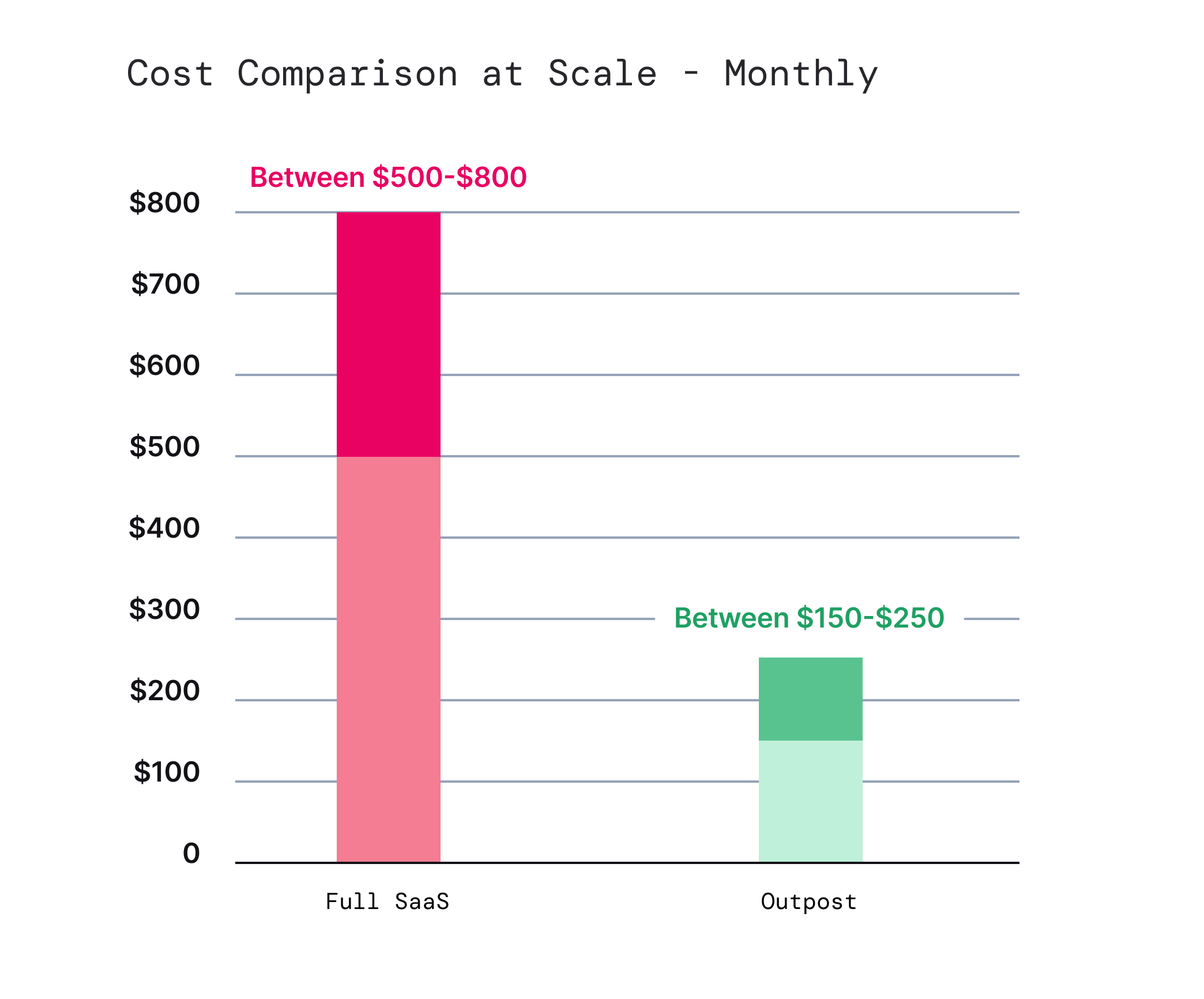
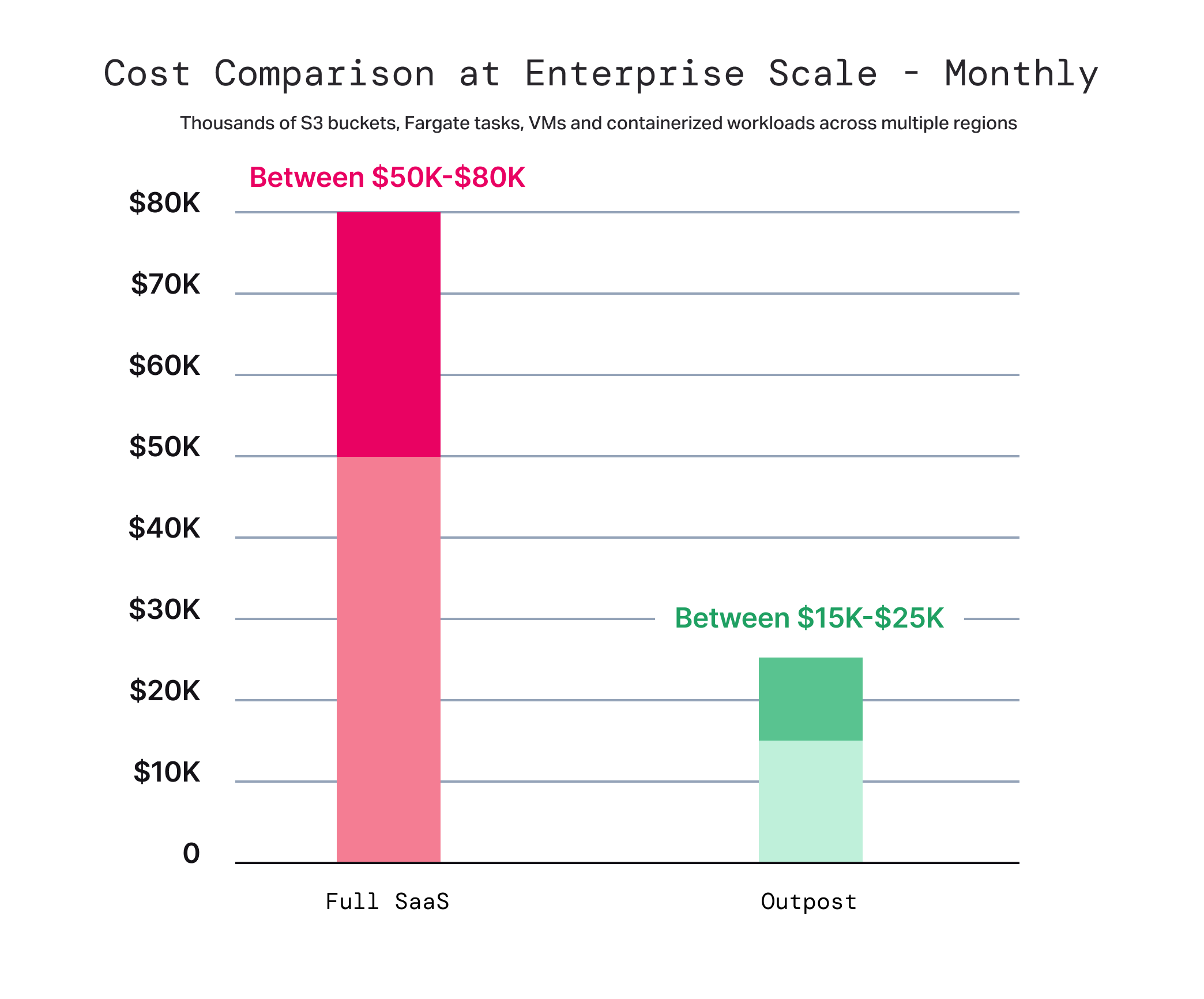
Operational and Compliance Trade-offs
Beyond direct compute economics, architecture impacts how efficiently and securely a scanning model operates in production.
- Data Residency and Sovereignty
Processing data outside the customer’s boundary can conflict with internal policies or regional regulations such as GDPR, CCPA, and FedRAMP. Even when vendors store only “metadata,” the distinction often blurs during deeper vulnerability or configuration analysis. - Forensics and Traceability
When analysis occurs off-platform, evidence and logs reside in the vendor’s infrastructure. Forensics teams may struggle to reproduce findings or maintain a chain of custody during incident response.
Both models have significant advantages and tradeoffs – full SaaS scanning prioritizes ease of use; in-account Outpost models prioritize control, compliance, and cost efficiency.
Designing for the Future: Distributed Signals
The cloud security industry is converging on a distributed model that combines multiple forms of telemetry rather than relying solely on API-driven scanning. Modern architectures blend:
- API-Based Visibility for asset and configuration discovery
- Agentless Snapshotting for rapid visibility and comprehensive coverage of legacy workloads
- Log and Event Streams for historical and compliance context
- Lightweight Sensors (eBPF, network probes, runtime collectors) for real-time exploitability insight

This hybrid approach provides both breadth and depth: agentless scanning delivers coverage, while runtime and telemetry sources add contextualization. It also optimizes cost by executing analysis closer to the data source and reducing unnecessary data transfer.
Key Takeaways
- Agentless is an architecture, not a shortcut. The underlying design determines visibility, compliance, and cost.
- Compute and egress dominate total cost of ownership. You receive ease of use with full SaaS scanning, but often higher long-term spend on compute than when employing the outpost model.
- Data locality equals control. Keeping scans and artifacts within your cloud preserves compliance and predictability.
- Hybrid architectures are the future. Combining APIs, logs, and sensors provides full coverage without runaway cost.
- Simplicity at scale requires design, not delegation. Shifting compute outward may simplify deployment today but complicate economics tomorrow.
Conclusion
Agentless scanning transformed cloud security by eliminating agents, but it also shifted cost and complexity into new layers of the stack. As environments scale, the true challenge becomes balancing operational simplicity with architectural control.
Choosing the right scanning model isn’t just about deployment, it’s about ownership. Understanding where your compute runs, where your data lives, and how those decisions shape long-term cost will define the next generation of cloud security strategy.





